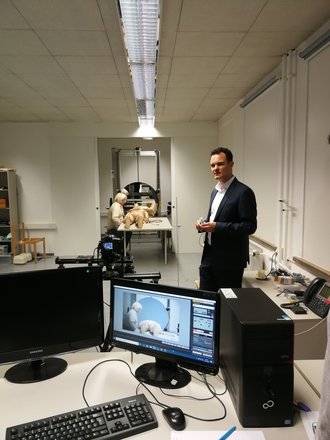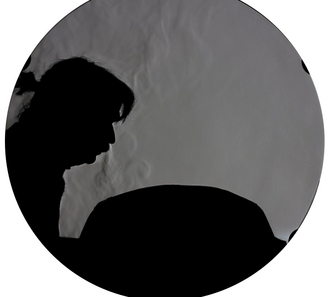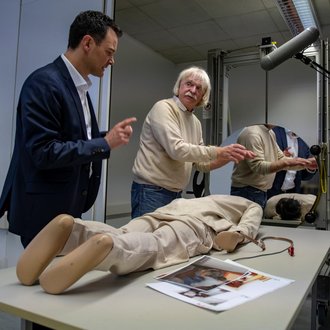Searching for clues: building physicists from Weimar help investigate a crime
Four weeks ago, the Bauhaus-Universität Weimar received an unusual request: the renowned criminologist Axel Petermann asked for assistance in the preparation of a forensic expert report. Specifically, the question was whether DNA traces can be transmitted through the air when we speak or breathe. Petermann hoped to obtain conclusive proof during a Schlieren laboratory experiment under the Professorship for Building Physics.
The Schlieren method is typically used at the Bauhaus-Universität Weimar to measure and visualise indoor airflow. However, this changed after a coronavirus prevention video was released: Prof. Dr.-Ing. Conrad Völker and Amayu Wakoya Gena (MSc) receive several requests a day for the visualisation of breathed air. The request from criminal profiler Axel Petermann stood out from the many medical queries: he was seeking to reopen criminal proceedings and requested assistance from the Weimar experts for this.
It was no sooner said than done: the experiment was conducted on 14 May in the Building Physics Schlieren laboratory. A crime scene was reconstructed in which a corpse was discovered and DNA from the suspect had potentially been transferred to the victim. In order to reconstruct the scene as faithfully as possible, Petermann first had the Mittweida University of Applied Sciences prepare a 3D simulation of the crime scene. The scene was then reconstructed in front of the Schlieren mirror based on this simulation. The thermal manikin Feelix, a human-like high-tech doll that the Professorship for Building Physics uses for various research purposes, served as the test subject. Clad in a wig, blazer and suit trousers, Feelix simulated a corpse for the first time ever, lying motionless face-down on the ground.
Petermann himself re-enacted the events that played out at the crime scene: he leaned down and read from the crime scene notes. Things that normally remain invisible to the naked eye are revealed before the Schlieren mirror: the figure of Petermann can be seen surrounded by convection currents caused by human heat emissions. Turbulent airflow can be seen in front of his mouth and nose that extends into the room at varying distances, depending on the intensity of his breath or speech. Could DNA have been transferred onto the corpse from the suspect’s breath or sprayed saliva? This will be clarified in an expert report being prepared in collaboration with Professor Brinkmann from the Institute for Forensic Genetics in Münster and Professor Baretto from the Max Planck Institute in Bad Nauheim.
About the criminologist
The case is being documented by a television crew from a public broadcaster, with a report on Petermann’s case analysis due to be aired in this summer. The best-selling author Axel Petermann worked as a detective superintendent and criminal profiler at the police headquarters in Bremen until 2014. Since retiring, he has cooperated with lawyers and relatives of victims of crime to solve cases of unexplained death. He also supports convicted individuals with his research and criminological knowledge during retrials.
About the Schlieren method
The Schlieren method is a technique for visualising and measuring indoor airflow. Fluctuations in the optical refractive index of air are visualised, which allows thermal convection currents to be seen, for example. The set-up essentially comprises a mirror with the precision of an astronomical telescope, a light source and a high-resolution camera.
https://www.uni-weimar.de/de/bauingenieurwesen/professuren/bauphysik/forschung/labor-und-versuchseinrichtungen/schlierenspiegel/
Contact
Prof. Dr.-Ing. Conrad Völker (Schlieren mirror)
Bauhaus-Universität Weimar
Faculty of Civil Engineering
Professorship for Building Physics
Tel.: +49 (0) 36 43 / 58 47 01
E-mail: conrad.voelker[at]uni-weimar.de




